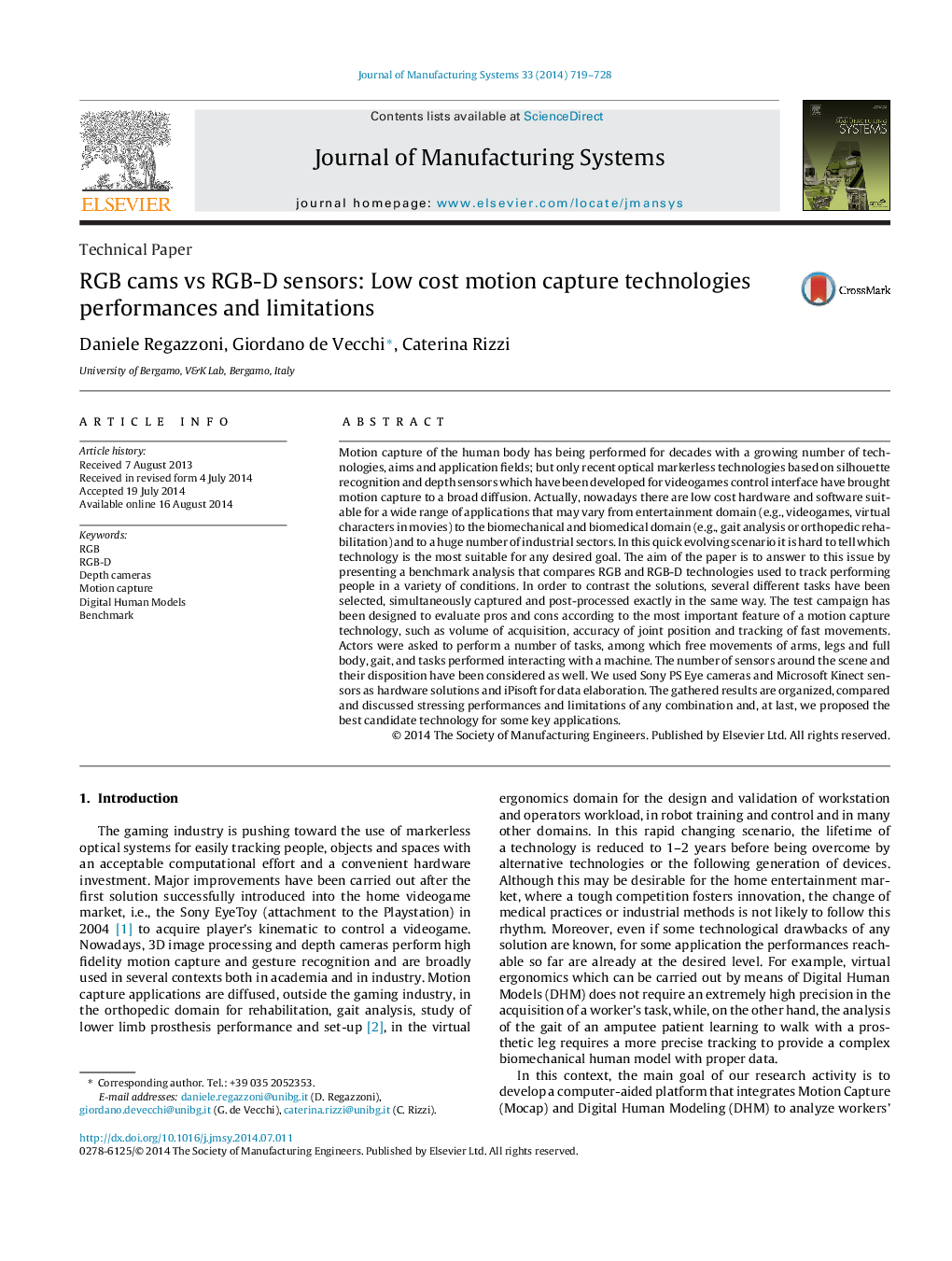| Article ID | Journal | Published Year | Pages | File Type |
|---|---|---|---|---|
| 1697583 | Journal of Manufacturing Systems | 2014 | 10 Pages |
Motion capture of the human body has being performed for decades with a growing number of technologies, aims and application fields; but only recent optical markerless technologies based on silhouette recognition and depth sensors which have been developed for videogames control interface have brought motion capture to a broad diffusion. Actually, nowadays there are low cost hardware and software suitable for a wide range of applications that may vary from entertainment domain (e.g., videogames, virtual characters in movies) to the biomechanical and biomedical domain (e.g., gait analysis or orthopedic rehabilitation) and to a huge number of industrial sectors. In this quick evolving scenario it is hard to tell which technology is the most suitable for any desired goal. The aim of the paper is to answer to this issue by presenting a benchmark analysis that compares RGB and RGB-D technologies used to track performing people in a variety of conditions. In order to contrast the solutions, several different tasks have been selected, simultaneously captured and post-processed exactly in the same way. The test campaign has been designed to evaluate pros and cons according to the most important feature of a motion capture technology, such as volume of acquisition, accuracy of joint position and tracking of fast movements. Actors were asked to perform a number of tasks, among which free movements of arms, legs and full body, gait, and tasks performed interacting with a machine. The number of sensors around the scene and their disposition have been considered as well. We used Sony PS Eye cameras and Microsoft Kinect sensors as hardware solutions and iPisoft for data elaboration. The gathered results are organized, compared and discussed stressing performances and limitations of any combination and, at last, we proposed the best candidate technology for some key applications.
